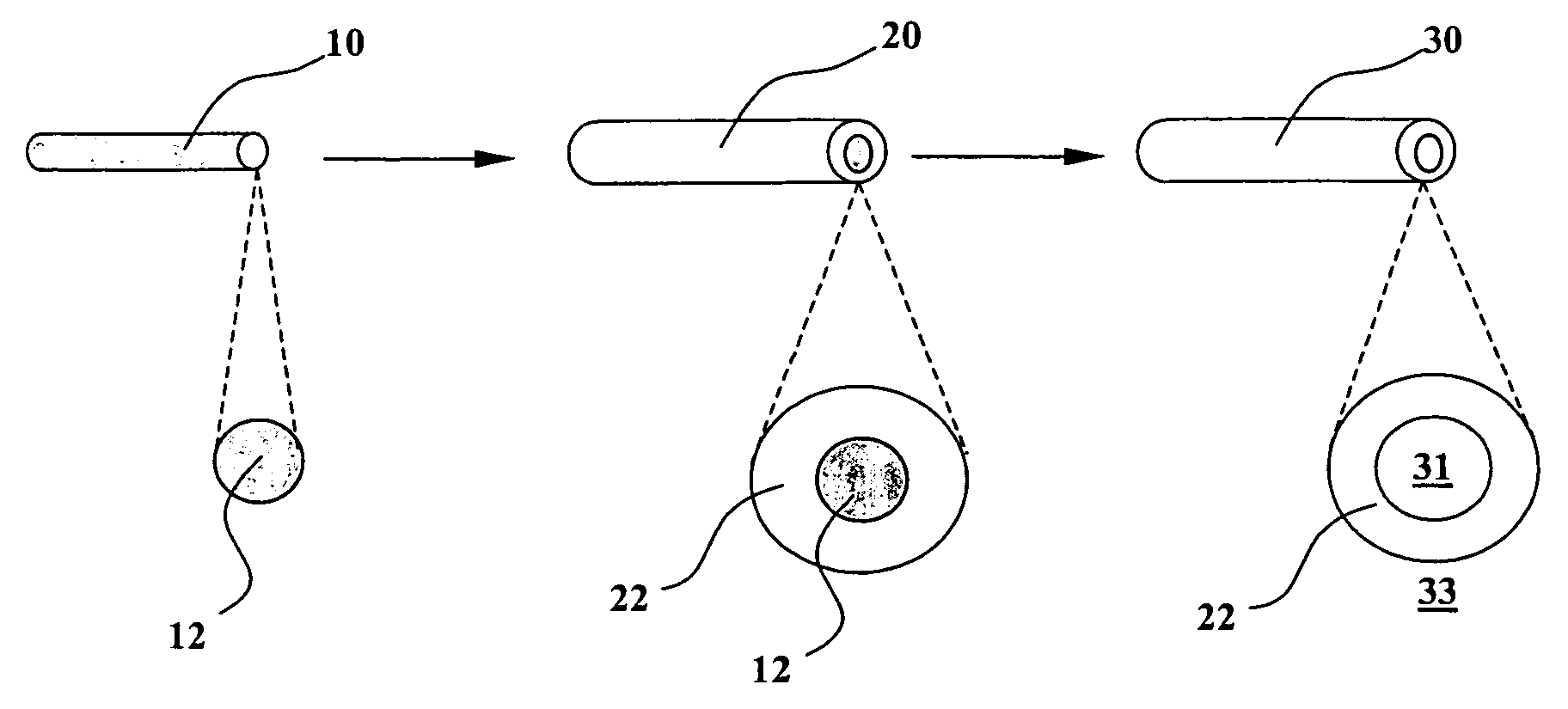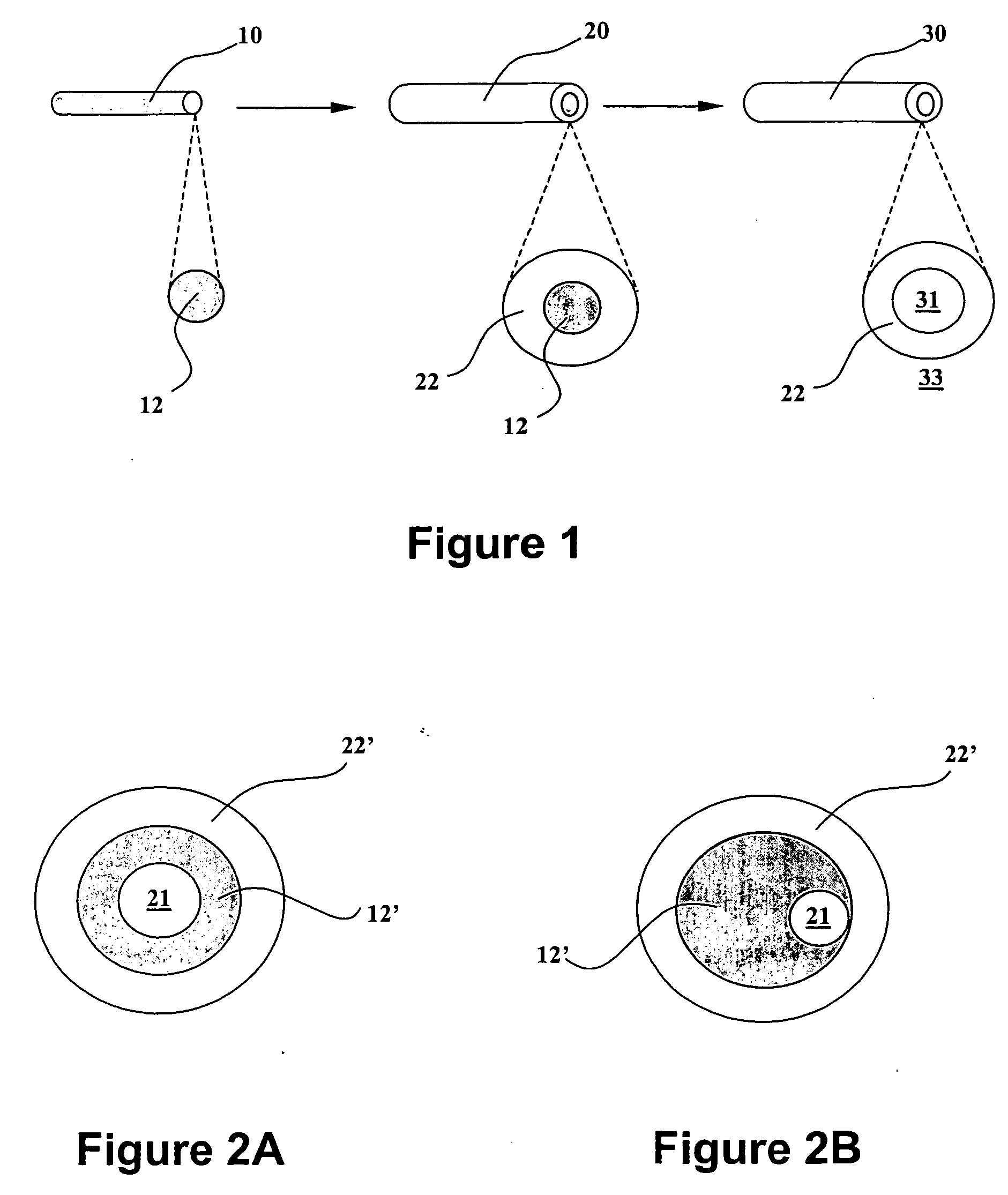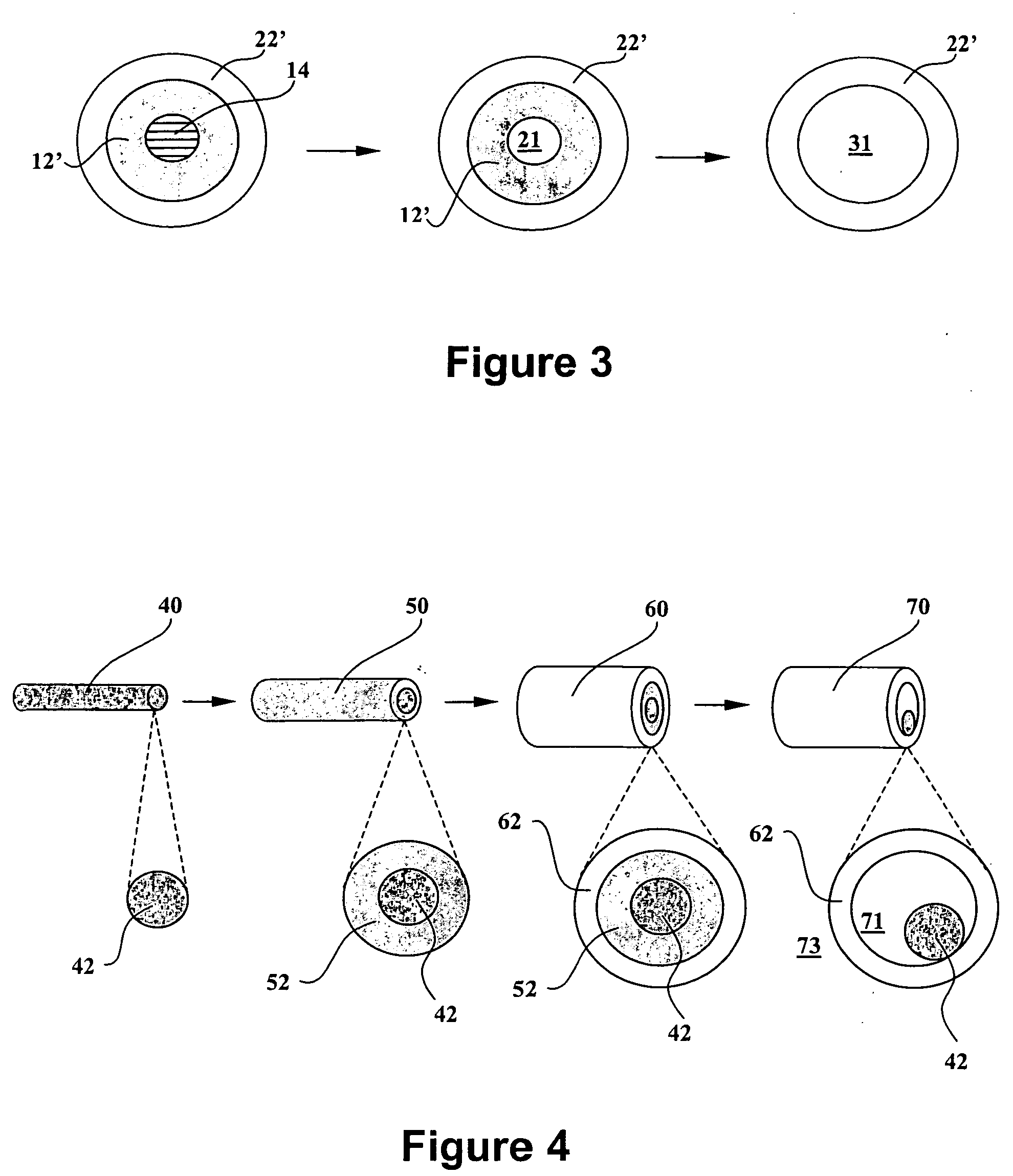Substrate-supported process for manufacturing microfibrous fuel cells
- Summary
- Abstract
- Description
- Claims
- Application Information
AI Technical Summary
Benefits of technology
Problems solved by technology
Method used
Image
Examples
example 1
[0139] In the fabrication of the microfibrous fuel cell in this example, a 304-grade stainless steel wire having a diameter of 0.020″ was provided as the inner current collector.
[0140] A removable polymer layer was formed over the inner current collector by extruding onto such inner current collector a polyvinyl pyrrolidone (PVP) solution (Luvitec K60, 45 wt %, as supplied by BASF Corporation), followed by drying.
[0141] The extrusion process conditions for the PVP 60 were:
Line Speed:3 m / minExtrusion Temperature:ambient (approximately 72° F. / 22° C.)Extrusion Rate:0.54 ml / minExtrusion Die Orifice:0.053″Extrusion Tip:0.023″× 0.032″ hypo-tubeIR Dryer Length:1 mIR Dryer Set Point:425° C.
[0142] After drying, the fiber was collected on a spool. The cross-section of the fiber was examined under a microscope and measured with a micrometer, showing that such fiber has a PVP layer of approximately 50 to 60 microns and an outer diameter of approximately 600 to 617 microns.
[0143] A membrane...
example 2
[0156] A hollow microfibrous Nafion membrane / inner current collector assembly was fabricated by a process similar to that described in Example 1, except that the removable substrate was consisted of two removable polymeric layers, including a first removable layer of PVP 60, as described hereinabove in Example 1, and a second removable layer of polyvinyl alcohol PVA (Elvanol, grade 70-62, from DuPont).
[0157] An aqueous solution of PVA was prepared by gradually dissolving the PVA polymer in hot water with stirring. The PVA concentration of such solution was 13 wt %, which gave sufficient viscosity for the extrusion process. To ensure complete drying of the PVA layer, a second infrared unit was put in line. Process conditions for the PVA extrusion were:
Line Speed:1 m / minExtrusion Temperature:ambient (approximately 72° F. / 22° C.)Extrusion Rate:0.23 ml / minExtrusion Die Orifice:0.034″Extrusion Tip:0.032″IR #1 Dryer Length:1 mIR #1 Dryer Set Point:425° C.
[0158] The thickness of the PVA...
example 3
[0161] A microfibrous fuel cell was prepared as follows:
[0162] A removable layer of polyvinyl pyrrolidone (PVP) was first formed by extruding a 45% Luvitec K60 PVP solution (supplied by BASF Corporation) around a titanium wire. An inner electrocatalyst layer was then applied onto the PVP-coated wire via ink extrusion. Two membrane-forming layers of concentrated 32 wt % Nafion solution were sequentially extruded over such inner electrocatalyst layer.
[0163] Specifically, the 32 wt % concentrated Nafion was obtained by evaporating a diluted Nafion solution that contained 20 wt % Nafion 1100EW (from Solution Technology, Inc.) in a mixture of alcohols and water. The concentrated Nafion solution had a viscosity of 890 poises, as measured by a rotational viscometer (Brookfield LVT model) with a #4 spindle at 6 rpm.
[0164] The catalyst ink used for forming the inner electrocatalyst layer was prepared by blending:
Material% weightPlatinum black (HiSpec 1000 from Alfa Aesar)16.0Deionized w...
PUM
| Property | Measurement | Unit |
|---|---|---|
| Temperature | aaaaa | aaaaa |
| Temperature | aaaaa | aaaaa |
| Temperature | aaaaa | aaaaa |
Abstract
Description
Claims
Application Information
 Login to View More
Login to View More - R&D
- Intellectual Property
- Life Sciences
- Materials
- Tech Scout
- Unparalleled Data Quality
- Higher Quality Content
- 60% Fewer Hallucinations
Browse by: Latest US Patents, China's latest patents, Technical Efficacy Thesaurus, Application Domain, Technology Topic, Popular Technical Reports.
© 2025 PatSnap. All rights reserved.Legal|Privacy policy|Modern Slavery Act Transparency Statement|Sitemap|About US| Contact US: help@patsnap.com



